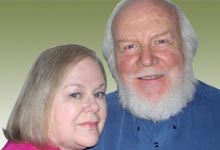When we were coming home from Queensborough recently, we noticed walls of containers stacked where a golf course used to be near the bridge approach. That turned the conversation to sports or recreational facilities that were once popular in the city but are no more.
In the early 1900s, curlers took part in their sport on ice, when it was available, at the early skating rink in Queen’s Park. Later a curling club was built near the foot of 16th Street, where curlers enjoyed their time prior to the current Royal City Curling Club being constructed. The old club building, last time we looked, is still there, but now stores paper products for Kruger Paper.
The golf course already mentioned was near the Queensborough Bridge on your right as you drove south off the bridge. This, as we remember, was in the 1960s and was a small format nine-hole course that was a lot of fun. On Eighth Street at Third Avenue there was a miniature golf business in operation that was very popular. This was in the 1930s and followed a popular fad in North America at that time.
There was a golf course amongst the trees in Moody Park in the late 1890s, and, from what we can ascertain, it was a very popular spot. Part of the area was shared with a target shooting club, which created some interesting rules that attempted to keep the golfers safe. Oh, yes, and sheep were allowed to graze in the park to keep the grass down for the golf club on the condition they be herded properly and not interfere with the public use of the park!
And there is a bit more golf to report. Although it never happened, the city in the 1930s was interested in the possibility of the development of a golf course on the large piece of land bounded by Sixth and Eighth streets, Eighth and 10th avenues. This is home today to the New Westminster Secondary School – lots of talk of former cemeteries, and much community discussion.
There was free camping for “auto tourists” in Queen’s Park back in the 1920s. The Gyro Club developed a tourist camp that welcomed the new “driving” tourist who ventured off to visit B.C. in a new automobile. One summer there were 1,370 cars registered, which held 5,300 people representing 37 states and five provinces and produced more than $935 in fees for the city treasury. However, they had to close the camp’s driveway and others in the park because people learning to drive were damaging the lawns and trees.



